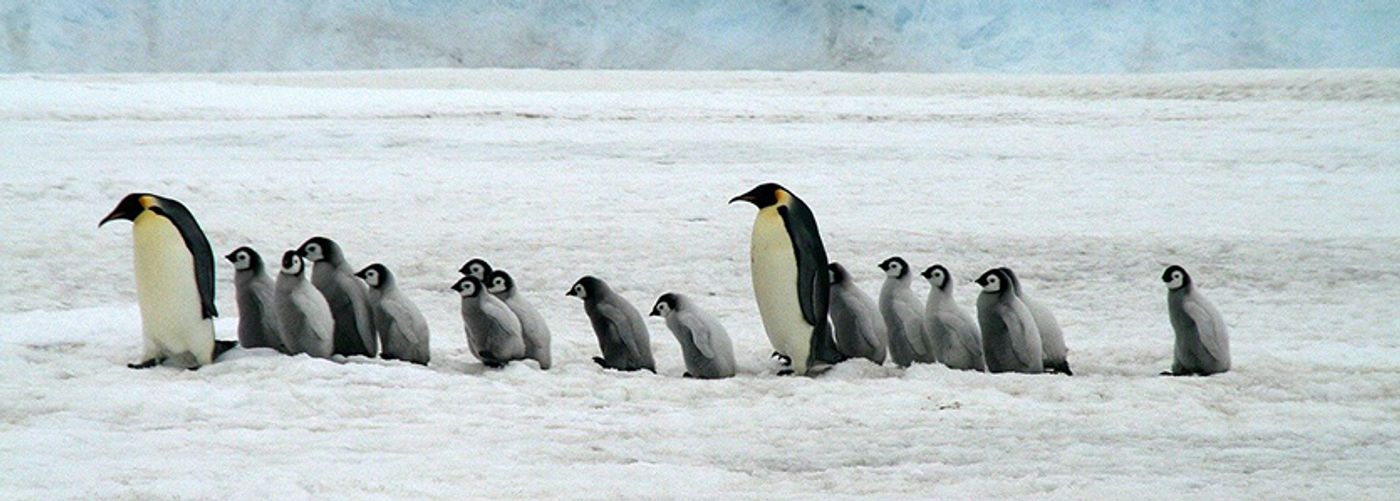Satellite Images Reveal New Emperor Penguin Colonies
The British Antarctic Survey (BAS) and the European Space Agency (ESA) recently shared excellent news about emperor penguins—nearly 20% more colonies exist than previously thought. This discovery was made by examining satellite images for penguin guano, or droppings, stains across the Antarctic continent.
The results of this survey were published this week in Remote Sensing in Ecology and Conservation. The study used images from the European Commission’s Copernicus Sentinel-2 Satellite mission to scan for the guano stains. According to the ESA, the penguins are too small to capture by satellite, but the colonies leave behind brown patches disclosing their existence. The study reports that this satellite mapping technology provides higher resolution and more efficient search mechanisms than the previously used Landsat data.
Based on Sentinel-2 data collected in 2016, 2018, and 2019, scientists identified 11 new emperor penguin colonies bringing the global total to 61 confirmed colonies. Three of these colonies were previously observed but not confirmed until now. Two new colonies occur in the Antarctic Peninsula region; three in west Antarctica; and six in east Antarctica.
In the press release from BAS, Dr. Peter Fretwell stated, “This is an exciting discovery. The new satellite images of the Antarctica coastline have enabled us to find these new colonies.” The study confirms the value of Sentinel-2 and its contributions to discovering and monitoring emperor penguin colonies.
Whether these colonies are breeding groups is yet to be confirmed. The study reports that these sites might be for molting or contain groups of non-breeding birds. Additionally, the colonies are considered small, increasing the estimated global population by five to 10%. The team reports that although the presence of even smaller colonies is likely, they won’t contribute significantly to the worldwide emperor population.
Another surprising revelation of this study was the identification of emperor sites on ice shelves at offshore sites. If these are breeding colonies, it will be a new behavior for this penguin species as they typically breed inland on the Antarctic continent more protected from harsh winter conditions.
Additionally, BAS and ESA report that these newly identified sites are in areas vulnerable to climate change. In “business-as-usual” emission scenarios, emperor penguin population loss will be more significant than previously estimated.
Philip Trathan, the Head of Conservation Biology at BAS, said: “Birds in these sites are therefore probably the ‘canaries in the coalmine’ – we need to watch these sites carefully as climate change will affect this region.”
Sources: ESA, BAS, Remote Sensing in Ecology and Conservation










